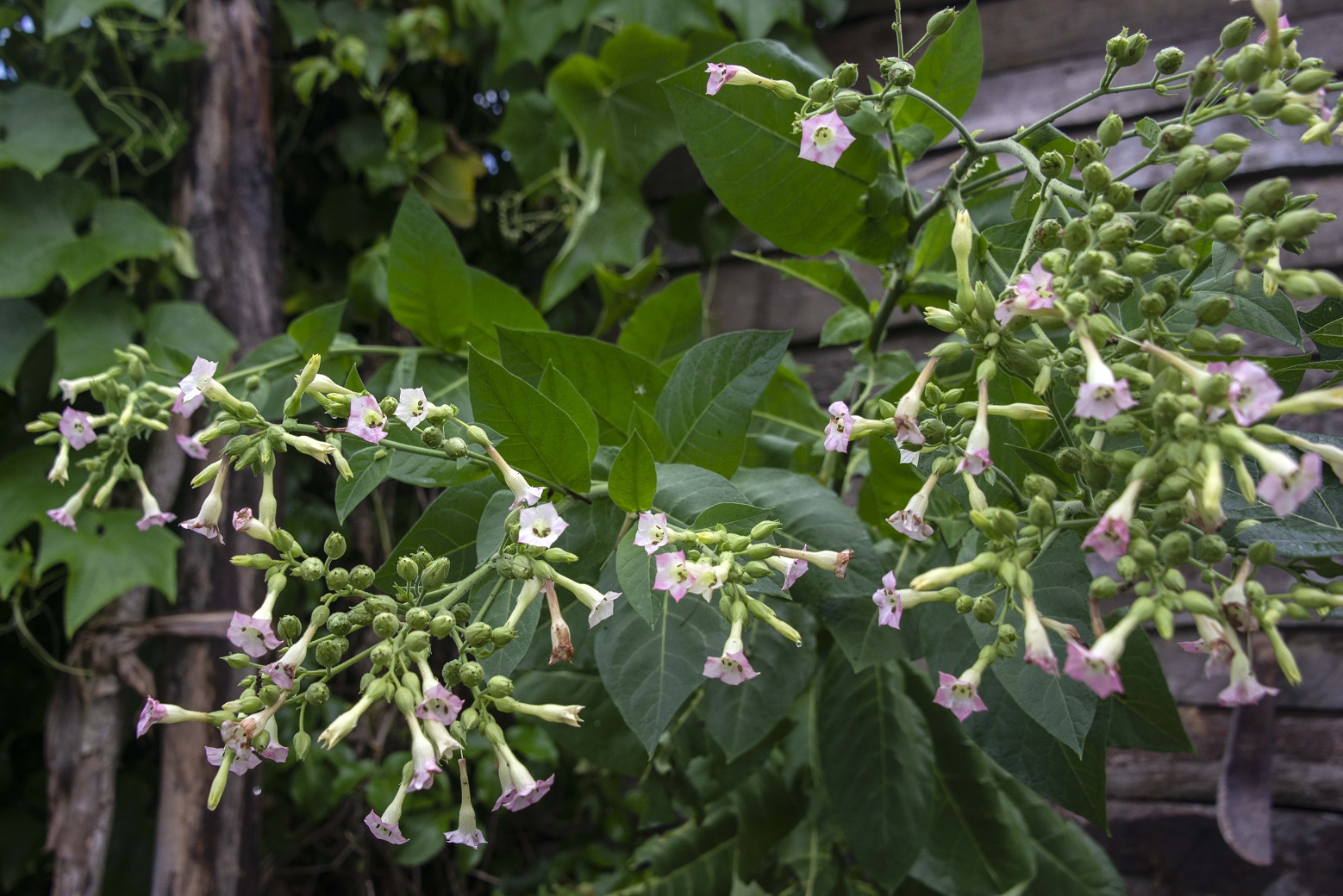

ARTICLE
THE WILD TOBACCO
BY: JULIO A. LARRAMENDI
On October 28, 1492, Christopher Columbus arrived in Bariay, in the chiefdom of Maniabón, north of the current province of Holguín, and pronounced his very famous phrase that it was the "most beautiful island that eyes have seen".
A few days later he would send Luis de Torres and Rodrigo de Jerez ashore, who between November 2 and 5 saw men and women inhaling smoke from cylinders of dry leaves. This is how Fray Bartolomé de las Casas described it in his Historia de las Indias:
…always the men with a firebrand in their hands [Cuaba] and certain
herbs to take their incense, which are some dry herbs [cojiba]
stuck in a certain dry leaf also like a musket […];
and turned on by one part of him by the other they suck or sip or receive
with the breath inside that smoke; with which they fall asleep
the meats and quasi get drunk, and so he says they don't feel tired.
These muskets […] they call “tobacco”.
In subsequent trips, the Europeans would discover that the use of the plant was widespread throughout the New World, where it was used for magical-religious ceremonies and as medicine, and it was consumed just as they had seen on the island of Cuba, but also in small pipes. and in pitchforks inserted into the nose.
Although the conquerors took some leaves of the plant to Spain, in their eagerness to search for riches they did not recognize the enormous treasure that was disappearing in smoke between their hands.
The first uses in European courts were as a medicine, and only years later it began to be consumed in powder form, the "snuff", obtained in stone mills. This is how it was used during the 16th century and the first half of the 17th.
In Cuba, in those communities where the descendants of our aborigines who survived the Spanish extermination are found, plants of that original or Cimarrón tobacco are preserved with which they make the "macuyo" for smoking and the tobacco ceremony, to prepare, with the seeds fried in oil to eat, potions against cold, pneumonia, bronchitis and for the "born" (pimples on the skin), a bit of withered leaf is used with bait.
In particular, in La Ranchería, a community in a valley hidden between mountains, far from the main towns of the province of Guantánamo, a unique rite is performed, under the name of the tobacco ceremony, with the specific intention of expressing appreciation and giving offerings. through the smoke. Francisco Ramírez Rojas, "Panchito", as cacique or main old man, offers it to the seven powers, which are of supreme importance for human life, a tradition inherited from his grandparents as a sign of respect for the Sun and the Earth.
The use of tobacco smoke for similar purposes later also became part of the religious ritual of African origin in Cuba, until today, due to the coexistence between indigenous people and slaves brought from Africa since early times.
A few days later he would send Luis de Torres and Rodrigo de Jerez ashore, who between November 2 and 5 saw men and women inhaling smoke from cylinders of dry leaves. This is how Fray Bartolomé de las Casas described it in his Historia de las Indias:
…always the men with a firebrand in their hands [Cuaba] and certain
herbs to take their incense, which are some dry herbs [cojiba]
stuck in a certain dry leaf also like a musket […];
and turned on by one part of him by the other they suck or sip or receive
with the breath inside that smoke; with which they fall asleep
the meats and quasi get drunk, and so he says they don't feel tired.
These muskets […] they call “tobacco”.
In subsequent trips, the Europeans would discover that the use of the plant was widespread throughout the New World, where it was used for magical-religious ceremonies and as medicine, and it was consumed just as they had seen on the island of Cuba, but also in small pipes. and in pitchforks inserted into the nose.
Although the conquerors took some leaves of the plant to Spain, in their eagerness to search for riches they did not recognize the enormous treasure that was disappearing in smoke between their hands.
The first uses in European courts were as a medicine, and only years later it began to be consumed in powder form, the "snuff", obtained in stone mills. This is how it was used during the 16th century and the first half of the 17th.
In Cuba, in those communities where the descendants of our aborigines who survived the Spanish extermination are found, plants of that original or Cimarrón tobacco are preserved with which they make the "macuyo" for smoking and the tobacco ceremony, to prepare, with the seeds fried in oil to eat, potions against cold, pneumonia, bronchitis and for the "born" (pimples on the skin), a bit of withered leaf is used with bait.
In particular, in La Ranchería, a community in a valley hidden between mountains, far from the main towns of the province of Guantánamo, a unique rite is performed, under the name of the tobacco ceremony, with the specific intention of expressing appreciation and giving offerings. through the smoke. Francisco Ramírez Rojas, "Panchito", as cacique or main old man, offers it to the seven powers, which are of supreme importance for human life, a tradition inherited from his grandparents as a sign of respect for the Sun and the Earth.
The use of tobacco smoke for similar purposes later also became part of the religious ritual of African origin in Cuba, until today, due to the coexistence between indigenous people and slaves brought from Africa since early times.



